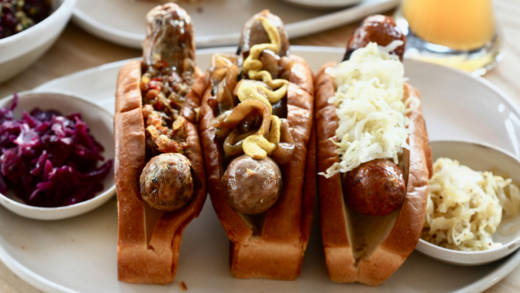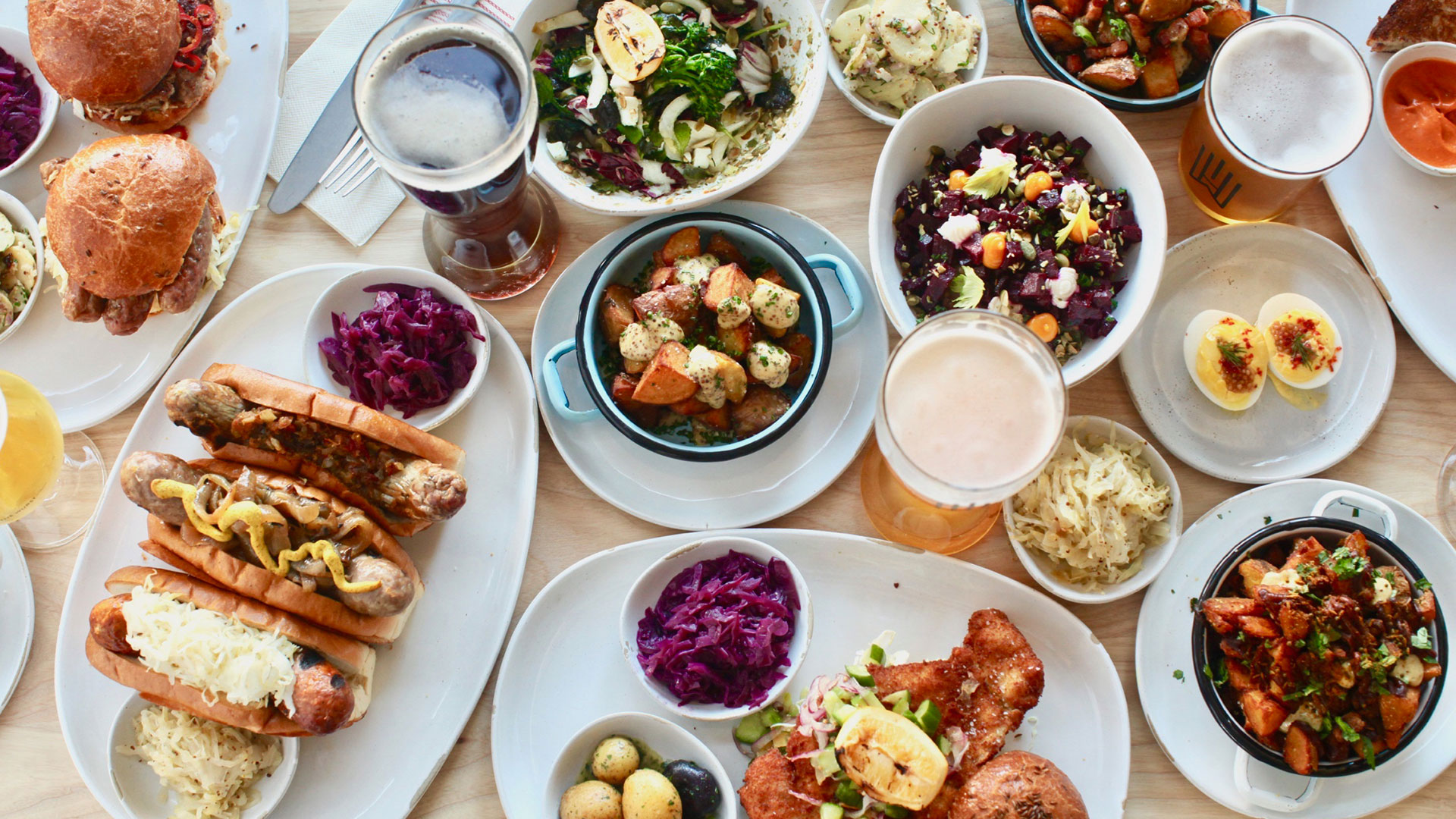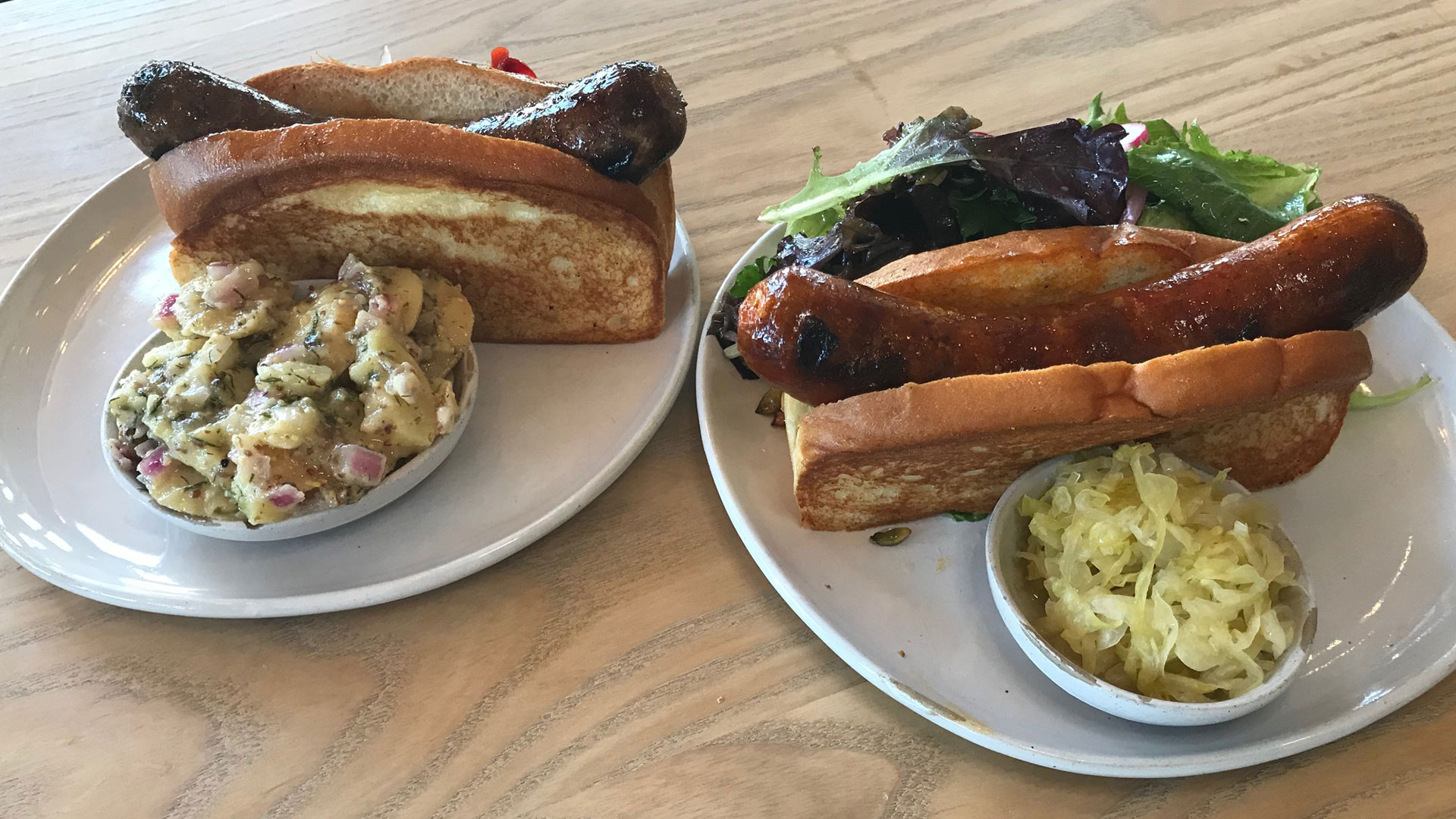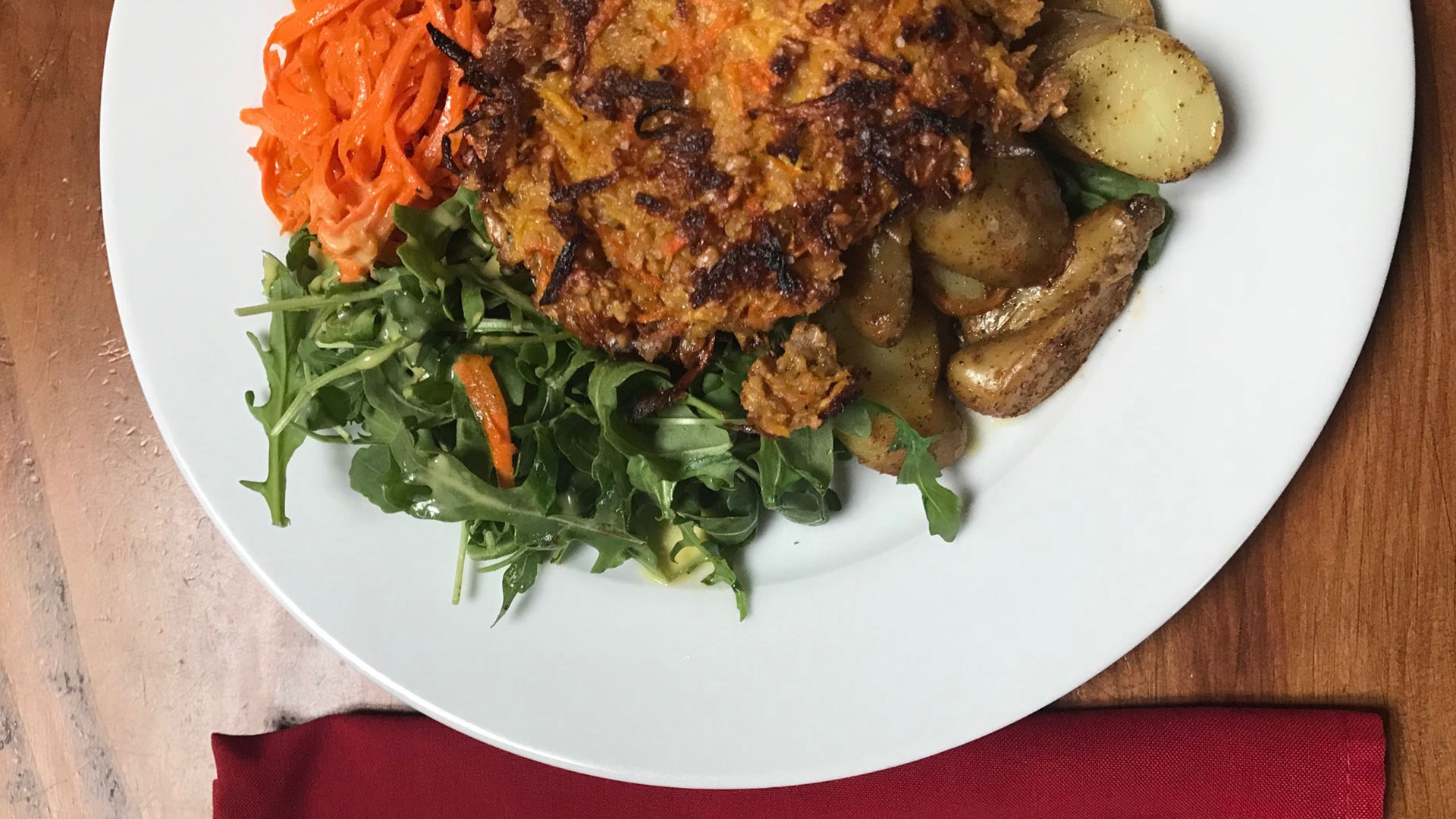German food is sausage. And beer. Lots of beer. Right? Yes, but Germany, like Italy or France, has a range of regional cuisines that reflect both geographic location and historical influences. In the expanding realm of German cuisine in the Bay Area, German chefs and chefs who just like German food are playing around with tradition, realigning familiar ingredients and playing with their food to capture the eye — and palate — of a new, food savvy audience. Don’t worry, you can still get delicious sausage in infinite variety. And beer. Lots of beer. But these fresh takes might inspire a new idea of what German food is today. (And beer.)
Radhaus
Landmark Building A,
Fort Mason, San Francisco
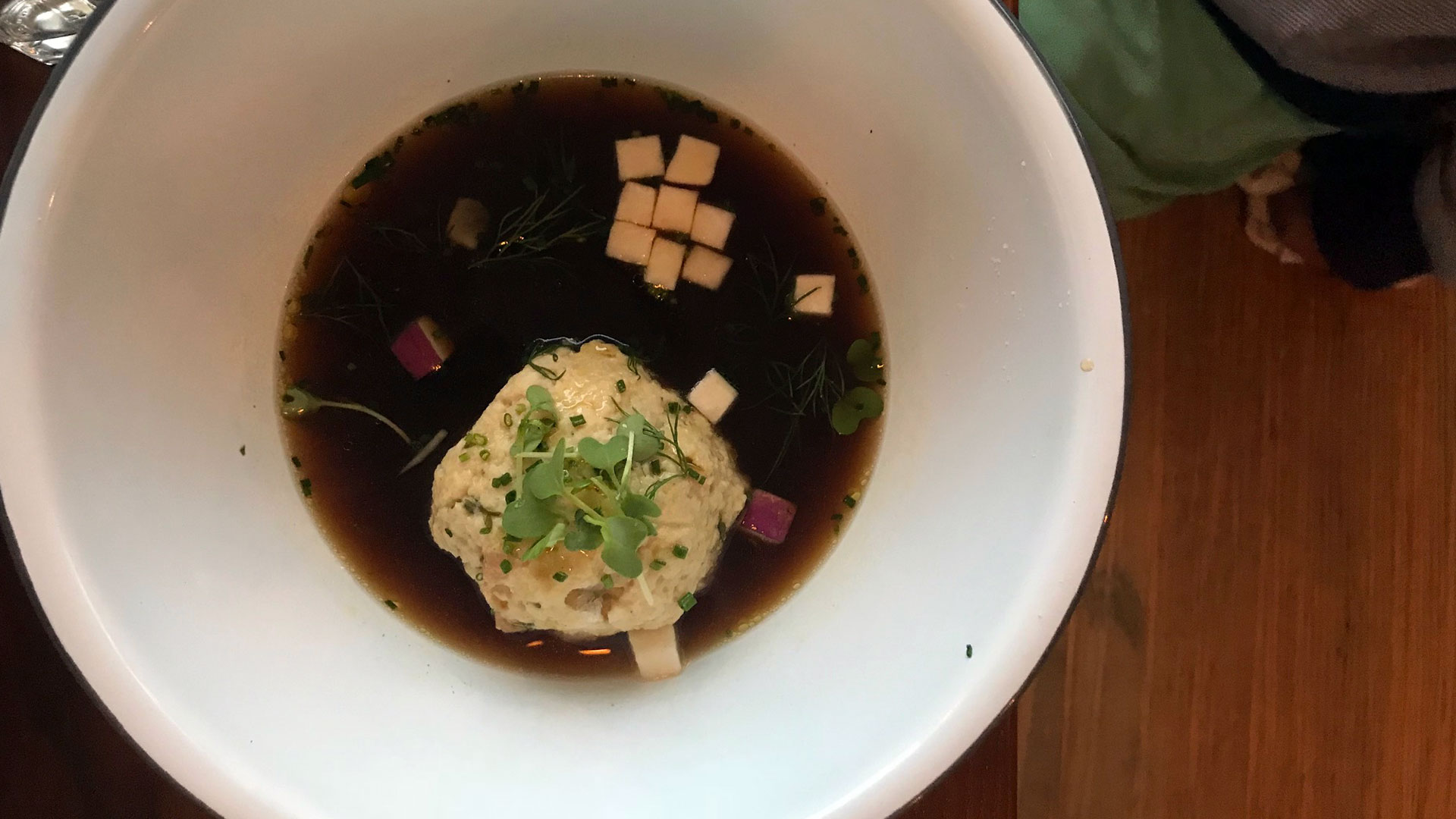
Bone broth and dumplings make any top 10 list of the Bay Area’s current culinary trends and Radhaus combines them into a singular, oh-so German dish: the dumpling.
The size of a softball, this dumpling, made of bread and steamed to a pleasing softness, floats atop a savory beef broth, its epic proportions generous enough to be called entrée. After its soak it in the muscularly seasoned broth, this dumpling is the essence of comfort food, taken to a new, trendier place, one that does not shy away from either heritage or robust flavor.
Part Bavarian beer hall, part beer garden, San Francisco’s Radhaus, from the Suppenkuche team, looks more to southern Germany and the alpine border region for its inspiration. Pretzels make regular appearances – as a side for the Bavarian cheese known as Obatzda or on their own with mustard and horseradish – and sausages from fresh weisswurst to grilled knockwurst get fun makeovers with sides of butternut squash mustard or pork broth. But this dumpling reminds us of what a knödel should be.
Speisekammer
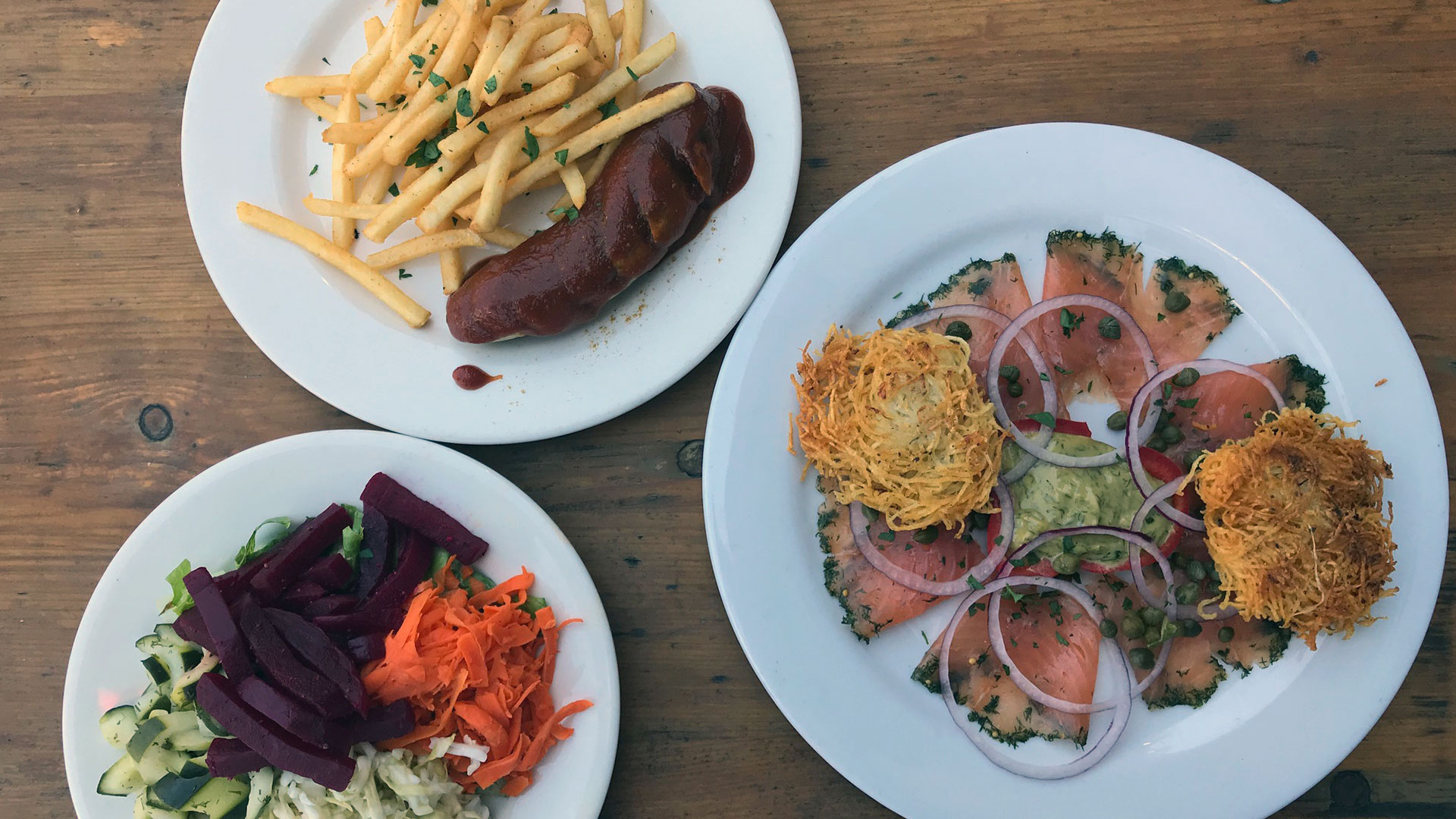
Curry, the generic term for a blend of spices, is often considered a part of the culinary lexicon of the Indian subcontinent. But curry refuses to be confined or defined, lifting on the trade winds to harbors far and wide. In Germany, currywurst is street food extraordinaire, sold from countless stands and shops on nearly every German street corner and marketplace. Said to be a product of post-World War II innovation from a Berlin homemaker who traded spirits for ketchup with a British soldier, currywurst is so popular, this humble sausage has spawned its own museum.
